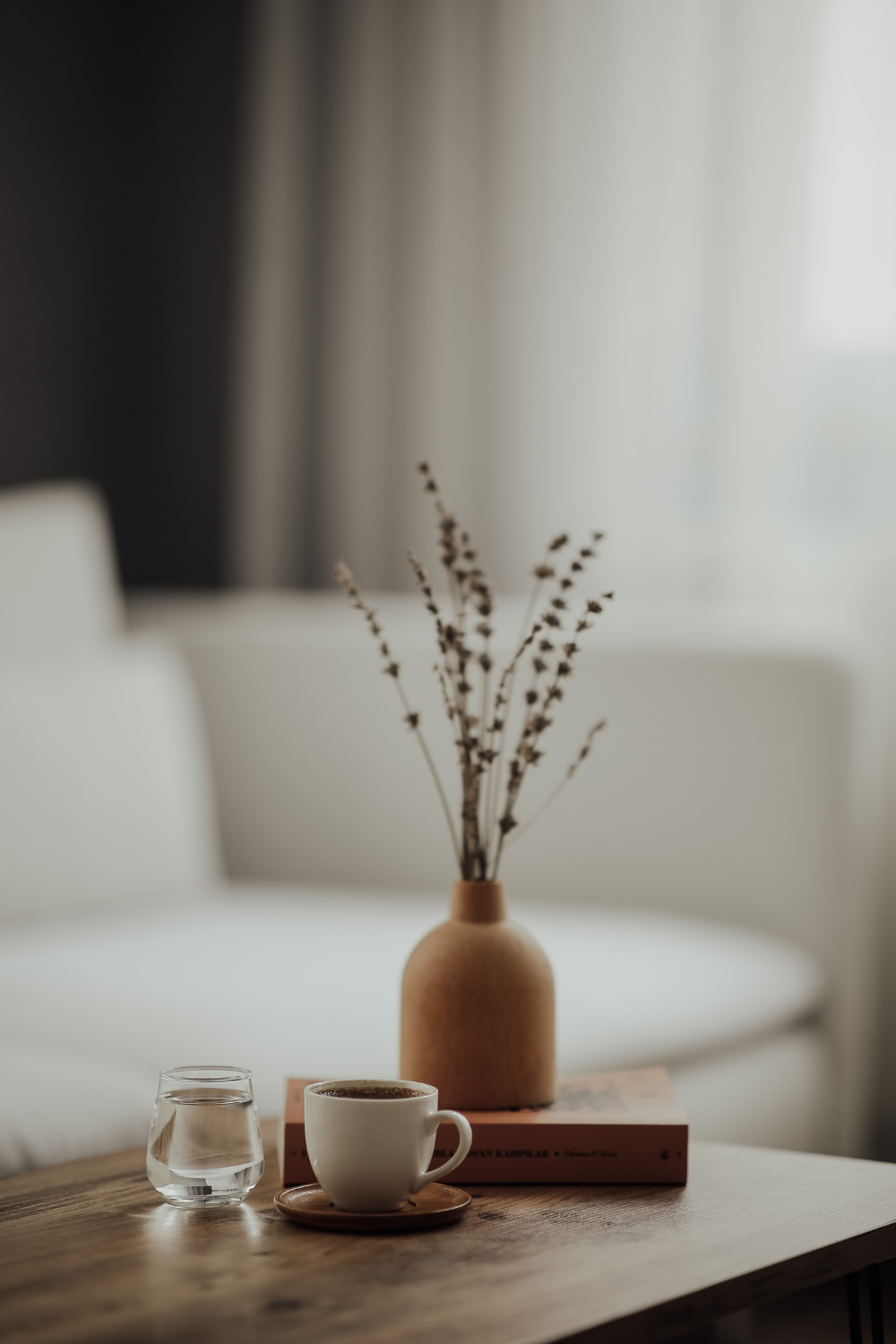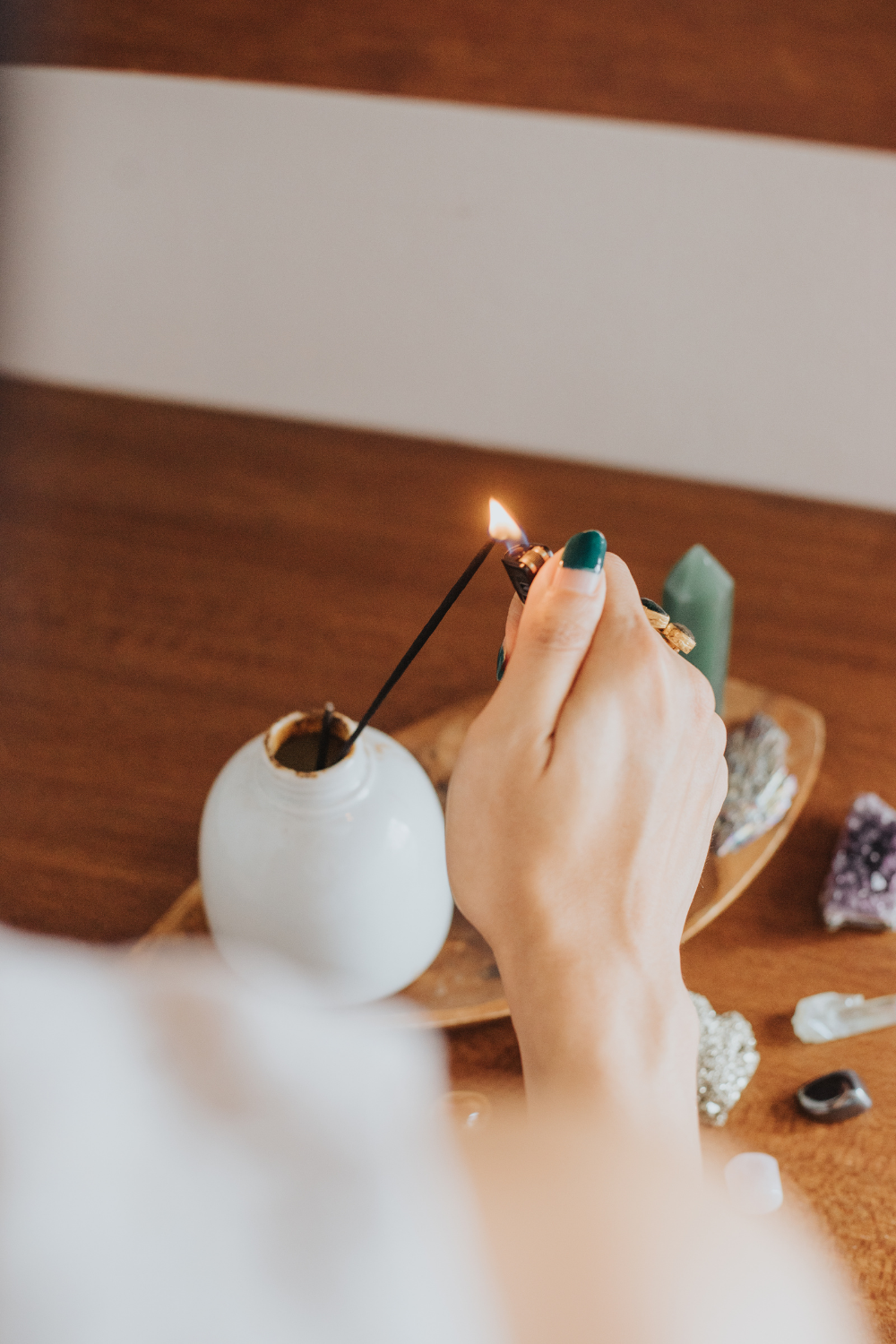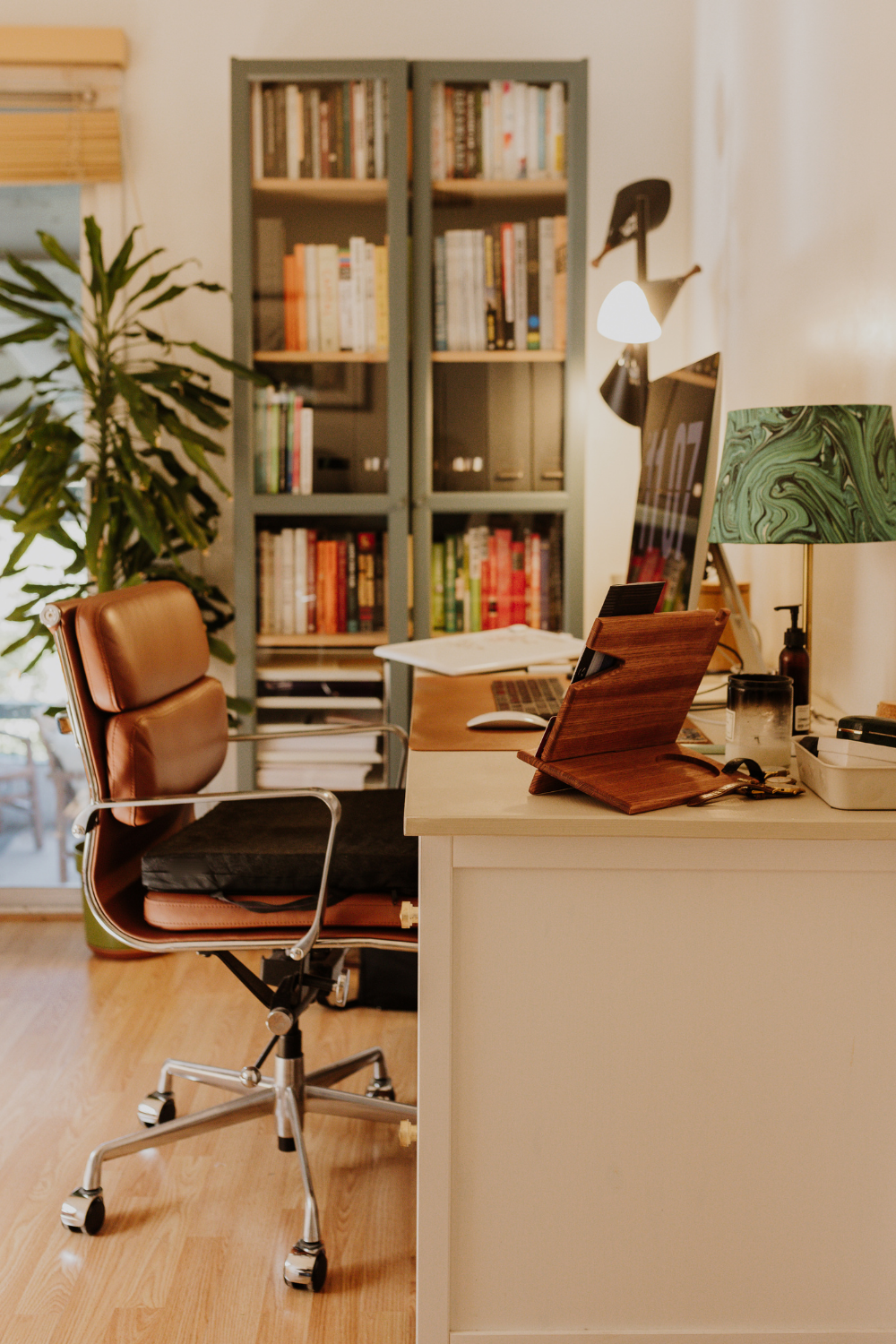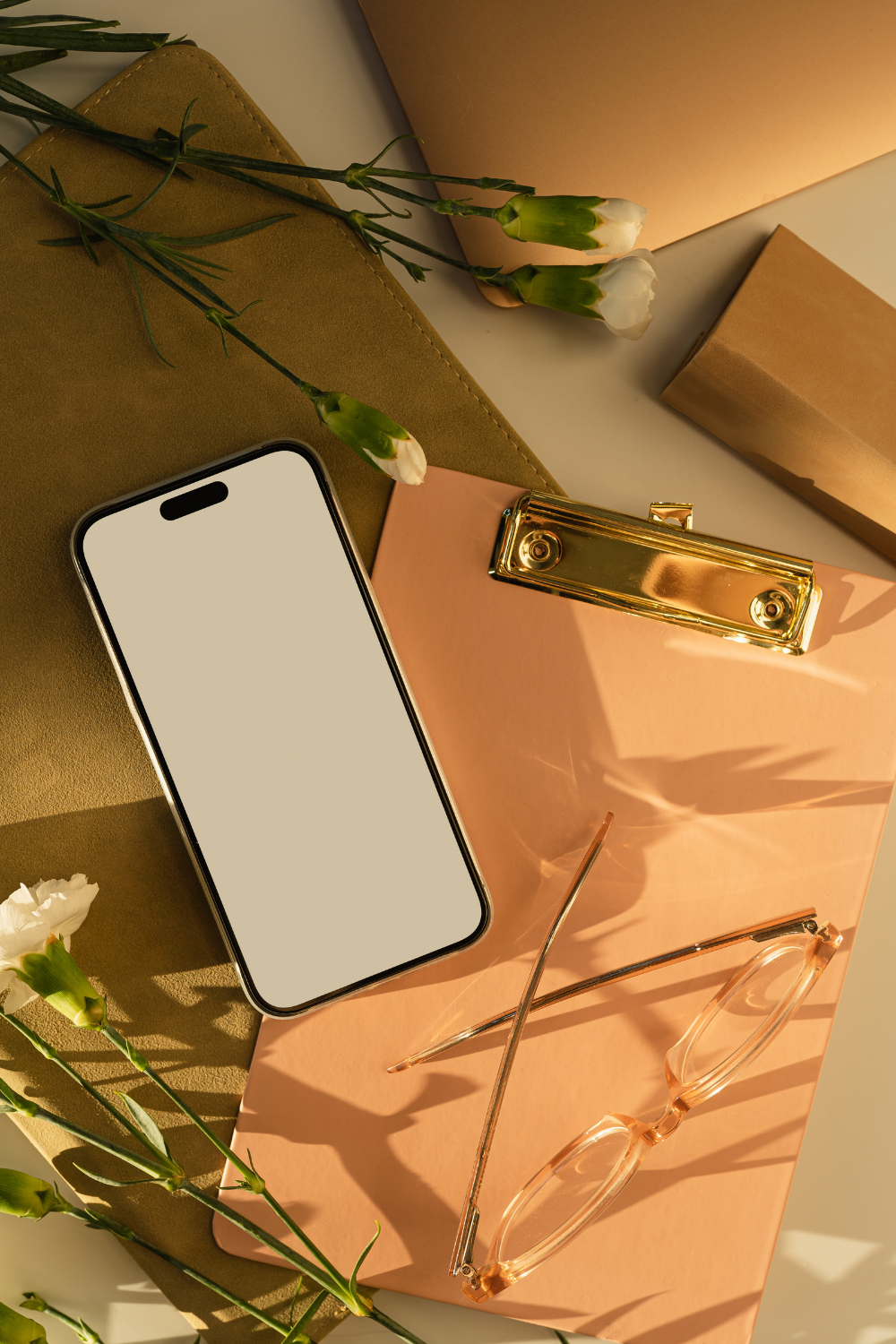40 Therapist office ideas and tips for branding your calm space
Creating a serene and inviting therapy office is essential for mental health professionals and therapists. Your office is more than just a workspace; it's a sanctuary where your clients should feel safe and comfortable. Whether you’re just starting your private practice or looking to refresh your existing space, these therapist office ideas and branding tips will help you create a warm and welcoming environment that resonates with your clients.
Starting a private practice and building your personal brand as a therapist can feel overwhelming. With so many decisions to make and details to consider, it's easy to feel lost about where to begin. Many therapists struggle with translating their therapeutic style into their physical and digital spaces, ensuring that both reflect the warmth and professionalism they offer.
How to make your therapy office feel like home
Creating a therapy office that feels like home is essential for building a trusting relationship with your clients. A welcoming and comforting space can help your patients feel more relaxed and open during their sessions.
By focusing on details that promote comfort and warmth—such as soft seating, calming colors, and personal touches—you can create an environment where clients feel truly cared for. Additionally, this blog will provide you with practical ideas for personalizing your office to reflect your unique brand. You’ll discover how to extend this sense of warmth into your digital presence, ensuring that your online persona mirrors the inviting atmosphere of your physical space. With these insights, you’ll be able to craft a cohesive brand that not only attracts potential clients but also fosters long-lasting relationships, making your practice a place where clients feel genuinely at ease.
Well, hello… I’m Natalia Maganda, Your New Guide to a Stunning Therapist Office
In case we haven’t met yet, I’m Natalia Maganda, a website designer for therapists specializing in helping ambitious life coaches and mental health professionals like you amplify their magic, gain visibility, and simplify their marketing efforts through strategic web design and content. Let’s dive into creating a calming and professional office space that reflects your unique brand.
Your therapist office is a crucial aspect of your practice.
It’s where your clients come to feel understood, supported, and heard. Creating an office space that exudes calmness and comfort can significantly impact your clients’ experiences and your practice's success. From the layout and decor to the colors and branding elements, every detail matters.
Do therapists really need a physical office?
Not necessarily. While having a physical office can provide a dedicated space for in-person sessions, many therapists successfully conduct virtual therapy. Launching a professional website and listing your services on platforms like Psychology Today can help you reach clients without a physical office. Virtual therapy offers flexibility and can be just as effective, allowing you to create a digital office that reflects your brand.
Designing your therapy office: Key elements to consider
Your therapist office should be a reflection of your therapeutic approach and personal style. It should be comfortable, welcoming, and professional. Here are some key elements to consider:
Create a comfortable seating:
Provide a variety of seating options that support relaxation and openness. Invest in high-quality chairs and sofas with supportive cushions. Make sure the seating arrangement promotes comfort and encourages clients to feel at ease. Consider adjustable seating or options that accommodate different preferences.
Soft lighting:
Utilize lamps and natural light to create a warm, inviting atmosphere. Opt for soft, diffused lighting rather than harsh overhead fixtures. Use adjustable lamps to control the light intensity, and position them to avoid glare. Natural light from windows can also be beneficial, so maximize its use with light, airy window treatments.
Calming colors:
Choose a color palette that promotes tranquility and focus. Soft, neutral tones like beige, light gray, or pastel shades can help create a soothing environment. Avoid overly bright or dark colors that may cause discomfort. Consider using color psychology to select hues that align with your therapeutic goals.
Personal touches:
Infuse your space with elements that reflect your personality and make the environment feel personal. Display artwork, inspirational quotes, or items that resonate with your therapeutic approach. Personal touches can help clients connect with you and make the space feel more inviting.
Making your therapy office comfortable
Creating a comfortable office is about more than just furniture. Here are some practical tips to make your space feel inviting:
Add soft textures:
Incorporate soft cushions, throws, and rugs to add warmth and comfort. Use plush textiles in seating areas and on floors to create a cozy atmosphere. Opt for materials like cotton, wool, or velvet that feel pleasant to the touch and enhance the overall comfort of the space.
Use calming aromatherapy:
Use essential oils or candles with calming scents like lavender, chamomile, or sandalwood. Aromatherapy can help create a relaxing environment and reduce stress for both you and your clients. Choose scents that are subtle and not overpowering, and ensure they are used in a way that complements the overall ambiance of the office. Aromatherapy can help create a relaxing environment and reduce holiday stress for both you and your clients.
* This post contains sponsored links
Soundproofing:
Ensure your office is quiet and free from outside noise with soundproofing materials or white noise machines. Use acoustic panels or soundproofing curtains to minimize distractions. White noise machines can help mask external sounds and create a consistent, calming auditory backdrop.
Natural Elements:
Bring in plants or flowers to add a touch of nature and enhance the ambiance. Indoor plants like peace lilies or succulents can improve air quality and provide a refreshing visual element. Choose low-maintenance plants that thrive in indoor conditions and complement your office decor.
The best colors for a therapy office: creating a calming palette
Choosing the right colors for your therapy office can significantly impact the mood and atmosphere. Here are some color ideas to consider:
- Blues and greens: These colors are known for their calming and soothing effects.
- Neutrals: Shades of beige, gray, and white create a clean and professional look.
- Soft pastels: Light shades of pink, lavender, and peach can add warmth without being overwhelming.
- Earth tones: Colors like brown, tan, and olive green can create a grounded and stable environment.
Tips for branding your therapist office
Your office should reflect your brand and therapeutic approach. Here are some tips to help you create a branded office space:
1. Define your brand style
- Before you start decorating, clearly define your brand identity. Consider the following:
- Therapeutic approach: Are you more traditional or modern in your methods? Do you use specific techniques that could be reflected in your decor?
- Target audience: Think about who your clients are. A child therapist's office will look different from that of a marriage counselor.
- Core values: Identify the core values you want to convey, such as warmth, professionalism, or creativity.
2. Select furniture and decor that reflects your brand
Choose furniture that matches the style of your brand. For example, modern and sleek for a contemporary practice or classic and cozy for a more traditional approach.
3. Incorporate your logo and brand elements
- Integrate your logo and other brand elements into your office design:
- Signage : Display your logo prominently at the entrance or in the reception area.
- Printed Materials: Use branded materials like business cards, brochures, and consent forms that feature your logo and brand colors.
- Digital Displays: If you use digital screens, incorporate your brand elements in the content displayed.
4. Create a welcoming reception area
- Your reception area is the first impression clients have of your practice:Reading Material: Offer a selection of reading materials that align with your practice, such as mental health magazines or books.
- Refreshments: Consider offering water, tea, or coffee to make clients feel more at home.
40 Therapist office ideas to inspire you
Elevate your brand with a beautiful therapy Office
Creating a calming and inviting therapy office is an essential part of building your personal brand. By thoughtfully designing your space and incorporating personal touches, you can create an environment that makes your clients feel at home. Remember, your office is an extension of your brand, and with these tips and ideas, you’ll be well on your way to creating a space that reflects your unique approach to therapy.
Transform your digital space with my web design services
If you’re ready to take your personal brand to the next level, explore my web design services for therapists. Download my free website planner guide to start creating a digital office that’s as warm and welcoming as your physical space. Let’s work together to amplify your magic and simplify your marketing efforts.
Related reads:
- The ultimate guide to branding your therapy and private practice
- 40 therapist headshots and photoshoot ideas
- 40 therapist office ideas and tips for branding your calm space
- 10 simple ways to get more therapy clients for your private practice
20 modern therapist logo ideas - 10 therapist business card ideas

* AI Disclosure: This content may contain sections generated with AI with the purpose of providing you with condensed helpful and relevant content, however all personal opinions are 100% human made as well as the blog post structure, outline and key takeaways.
* Affiliate Disclosure: Some of the links on www.nataliamaganda.com may contain affiliate links meaning that I will get a commission for recommending products at no extra cost to you.

hello! i'm natalia
Latina, web design expert for mental health professionals.
I help ambitious life coaches, therapists and holistic leaders amplify their magic, gain visibility, and simplify their marketing efforts through strategic web design and content.

















































